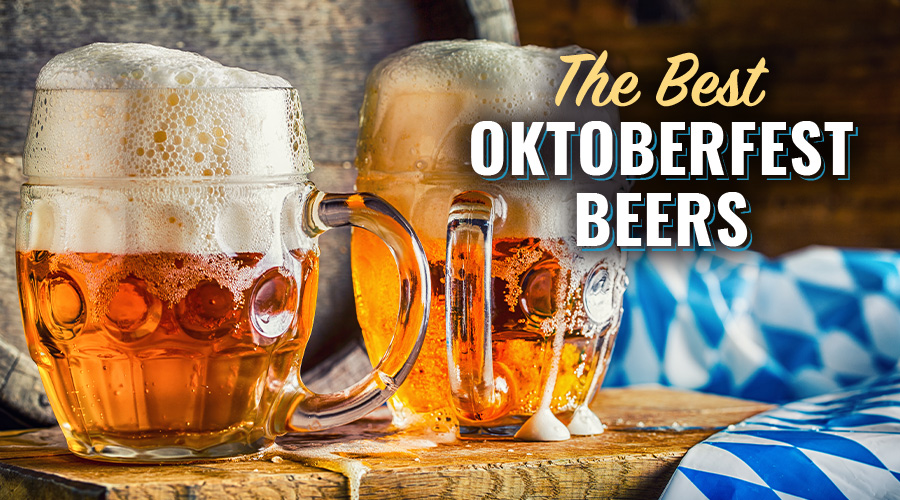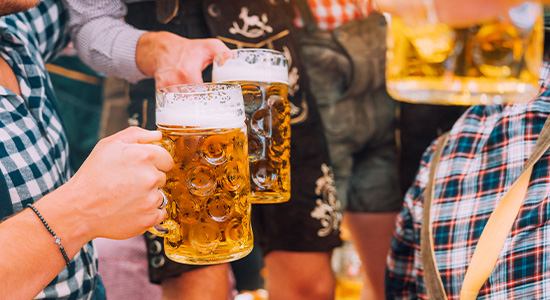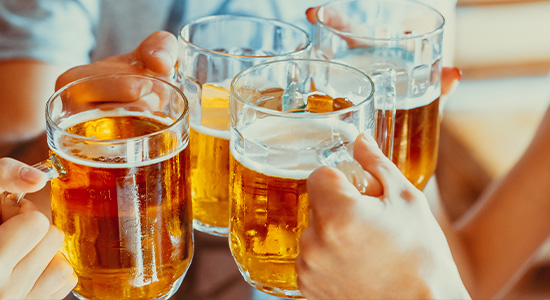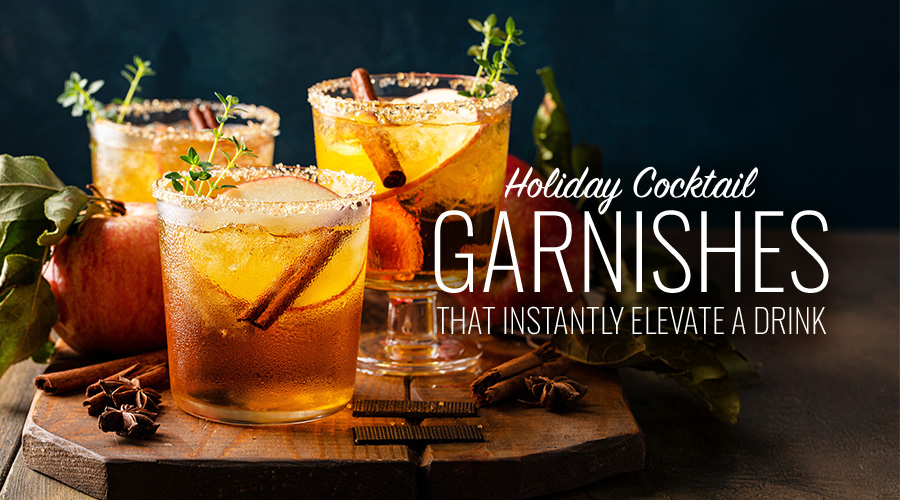
Every year, millions of people from around the world gather in Munich, Germany, to celebrate the beloved Oktoberfest. This grand festival, steeped in history and tradition, is a vibrant celebration of German beer & culture. In today’s blog, we’ll explore the history of Oktoberfest, explore what makes it such a beloved event, and raise our glasses to the German beer that flows freely during this remarkable time of year.
A Toast to History – What is Oktoberfest?
Oktoberfest, often called the world’s largest beer festival, has a history that dates back to the early 19th century. Its origins are rooted in a royal wedding celebration, which took place on October 12, 1810, when Bavarian Crown Prince Ludwig married Princess Therese of Saxony-Hildburghausen. To commemorate this joyous occasion, the citizens of Munich were invited to join in the festivities. Little did they know that they were laying the foundation for a tradition that would endure for centuries.
The Celebration Spreads
Originally, Oktoberfest was primarily a horse race, held on the Theresienwiese, or Therese’s Meadow, as a nod to the bride. Over time, the festival evolved to incorporate more and more elements of entertainment, including live music, food vendors, and, of course, beer. The horse race eventually faded into history, but the festival grew exponentially in popularity.
By the mid-19th century, Oktoberfest had become an annual event that extended beyond its original wedding celebration. The festival was extended to 16 days to include German Unity Day on October 3rd. This decision further solidified Oktoberfest as an integral part of Bavarian culture, and its importance continued to grow.
Beer Takes Center Stage
One of the most iconic aspects of Oktoberfest is, without a doubt, the beer. Brewed according to the Reinheitsgebot, or German Beer Purity Law, Oktoberfest beer is a lager known as Märzen. This beer is brewed in March, stored in cool cellars, and then tapped for the festival in September. The Märzen has a rich amber color, a malty sweetness, and a clean, crisp finish—a perfect accompaniment to the hearty Bavarian fare served at the festival.
The beer is served in one-liter mugs known as Maßkrüge, and typically enjoyed in large tents. These tents are a crucial part of the Oktoberfest experience, offering a place to relax, enjoy live music, and savor the excellent German beer. There are several major breweries in Munich that participate in Oktoberfest, each with its own tent, including Spaten, Paulaner, Augustiner, Hofbräu, and Hacker-Pschorr.

A Global Phenomenon
While Oktoberfest originated in Munich, it has spread its influence worldwide. Numerous cities across the globe host their own Oktoberfest celebrations, often following the Munich tradition with beer, food, and entertainment. These international festivals allow people from different cultures to experience a taste of Bavaria and celebrate German heritage.
Oktoberfest is a grand celebration of German culture and beer that has captivated the hearts and palates of people from all over the world. Its rich history, vibrant traditions, and the quality of German beer make it an event like no other. Whether you’re a beer enthusiast, a lover of international festivals, or simply curious about experiencing the magic of Bavaria, Oktoberfest is a must-visit. So, don your dirndl or lederhosen, raise your Maßkrug, and join in the joyful chorus of “Ein Prosit” as you immerse yourself in the world of Oktoberfest—a celebration that combines history, camaraderie, and the undeniable allure of German bier. Prost!
What Are the Differences Between German and American Beer?
If you’re new to German German beer and American beer have distinct characteristics that set them apart.
Brewing Traditions and Styles:
- Germany has a long and storied brewing tradition that dates back centuries. Many German breweries adhere to strict, traditional methods and recipes. They are renowned for their adherence to the Reinheitsgebot (German Beer Purity Law), which allows only four primary ingredients in beer: water, malt, hops, and yeast. This purity law has shaped the character of German beer, emphasizing quality and simplicity.
- In contrast, American craft breweries are known for their experimentation and innovation. They often push the boundaries of beer styles, creating a wide range of unique and creative brews. While many adhere to traditional brewing methods, the American craft beer scene is characterized by its willingness to incorporate diverse ingredients and styles, leading to a wide variety of beer flavors and types.
Beer Styles:
- Germany is famous for its lagers, particularly the clean, well-balanced pilsners and the maltier Märzen-style beers, which are commonly associated with Oktoberfest. Germany also produces world-class wheat beers, such as Hefeweizen and Dunkelweizen, known for their fruity and spicy yeast character.
- American beer encompasses a broad spectrum of styles, including ales, lagers, stouts, IPAs (India Pale Ales), sours, and more. American craft brewers have been instrumental in popularizing hoppy, bold-flavored IPAs, which tend to be more bitter and have a higher alcohol content compared to many traditional German beers.
Hops:
- German beers often feature noble hops, which are known for their mild, floral, and earthy aroma. These hops contribute to the balanced bitterness and subtle hop flavors found in many German lagers.
- American craft beers frequently showcase a wider variety of hop varieties, including American hops like Cascade, Citra, and Simcoe. These hops are known for their citrusy, fruity, and piney aromas, which can create more intense hop-forward flavors in American beers.
Alcohol Content:
- Traditional German beers tend to have moderate alcohol content, with many hovering around 4-6% alcohol by volume (ABV). Exceptions exist, such as the stronger Doppelbocks and Eisbocks.
- American craft beers can have a broader range of alcohol content, from sessionable beers below 4% ABV to powerful imperial stouts and barley wines that exceed 10% ABV. High-alcohol beers are more common in the American craft beer landscape.
Carbonation:
- German beers, especially traditional lagers, often have a restrained and smooth carbonation level, which complements their crisp and clean character.
- Some American beer styles, particularly IPAs, stouts, and ales, may have a higher level of carbonation, contributing to a livelier mouthfeel and a more effervescent experience.
Flavor Profile:
- German beers are known for their balance and subtlety. They often emphasize malt flavors, showcasing the quality of the grains used, and the hops are used for bitterness rather than dominant flavor.
- American beers, especially hop-forward styles like IPAs, can be characterized by more pronounced hop flavors, which can range from citrus and tropical fruit to resinous and piney notes. Additionally, American craft beers may experiment with various ingredients like fruit, spices, and barrel aging, leading to a wider flavor spectrum.

Top Oktoberfest Beers
Paulaner Oktoberfest
This beer is only brewed for the Oktoberfest. The perfect balance of a light taste of hops and a strong note of malt.
Salvator
The head is the color of caramel and the beer is chestnut brown – the finest Munich malt, rounded off by a light note of hops in the background.
Ayinger Oktoberfest
Deep golden color tinted with amber. It is lightly sweet with a malty nose, balanced with floral hops.
Ayinger Celebrator
Almost black with a very slight red tone. The first taste is of mild fullness with an accompanying coffee tone, which becomes more dominant with the aftertaste.
Spaten Premium
Sweet grainy notes rush over the tongue as spicy hops and modest bitterness cut into the malty foundation. Crisp into the finish this refreshing beer wraps up dry and is about as quaffable as they come.
Bitburger Pilsner
The perfected delight of pilsener with an accent of hops, combined with ease and elegance, and a crystal-clear, sunny straw-color and long-lasting, fine head:
Weihenstephaner Hefe
Fruity nuances of banana and cloves intermingle with malt flavors to create a balanced beer with a light, creamy character. This premium, naturally cloudy, pale amber wheat beer is truly a feast for the senses.
Hofbrau
Pours a beautiful clear gold color. A sweet, bready aroma of grains, yeast, and fresh honey with a touch of hops. Tastes of yeast and sweet, bready malts infused with spicy hops and floral notes.
Copyright 2023 Spec’s Wines, Spirits & Finer Foods. All rights reserved. This material may not be published, broadcast, rewritten, or redistributed.




